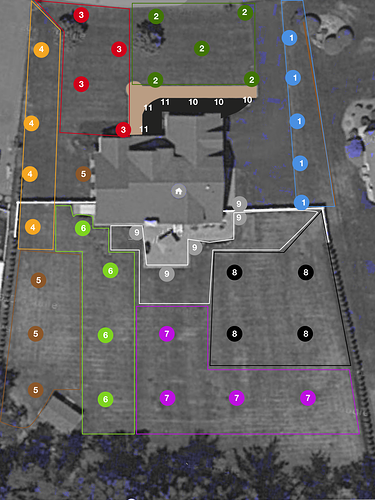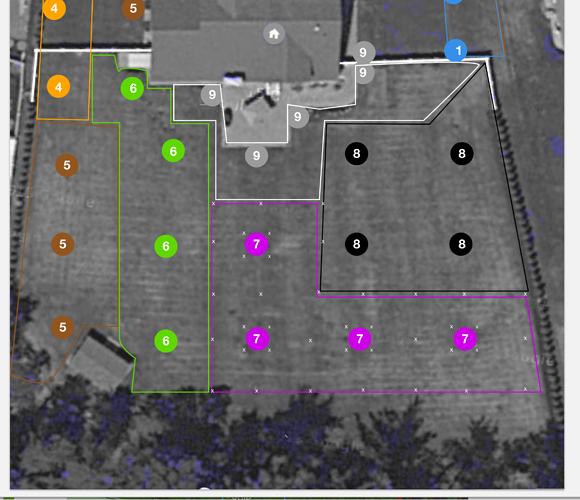I have my Rachio for a couple years now. First the 1st gen then the second gen. Overall have enjoyed it more than our non connected previous Hunter System. The main reason for the purchase was so that it could automatically suggest watering schedules and constantly change based on current and future weather, temp, time of year etc. While Gen 1 was a bit buggy in that regard Gen 2 seems to be able to handle all of that with Flex Daily in general.
Yet still have always stuck with the traditional fixed schedules with manually entered in times since any time I let Rachio decide it says to run for instance the sprinkler for 12 or 13 hours, which is completely off for our zones so have always ignored it. To note entered in the custom zones for each each based on the specs of the heads.
My guess is, since each zone overlaps each other as they should, Rachio is calculating as if there was no overlap which is why the numbers are so drastically high. So I’d like to do catch cups and factor in all the overlap to get precise numbers and hope once and for all will be able to use all of Rachios amazing automations for proper time estimates I can count on.
Attached is a drawing home our lawn. I added number/circles with each sprinkler head is organized by zones. For the borders for each zone drew in the middle between each adjacent zone but there is overlap on all of those. My next challenge is where to place each catch cup for each zone. I’m using Orbit Catch cups but their example locations are based on a perfectly square with only a few heads so hard to apply to my layout.
Would love if anyone could share their thoughts or if someone could draw little circles on my image of where it’s recommended to put each cup. I have a rough idea but imagine there are smarter irrigation pros here than me!




